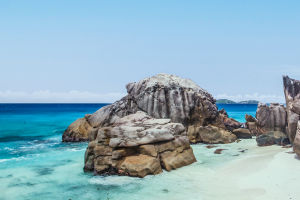Welcome Lykkers! The Golden Gate Bridge is one of the most iconic landmarks in the United States and a symbol of San Francisco's ingenuity and beauty.
Spanning the Golden Gate Strait, the bridge connects the city of San Francisco to Marin County, offering breathtaking views of the Pacific Ocean and the San Francisco Bay.
History and Conception
Before the Golden Gate Bridge was built, the only way to travel between San Francisco and Marin County was by ferry. By the early 20th century, the growing population and increasing automobile use highlighted the need for a fixed crossing. However, constructing a bridge across the 1.6-kilometer-wide strait posed significant challenges, including strong tides, dense fog, and high winds.
The idea for the bridge gained momentum in the 1920s, led by Joseph Strauss, a visionary engineer who initially proposed a cantilever-suspension hybrid design. Strauss faced resistance from skeptics who doubted the feasibility of such a project and feared it would ruin the natural beauty of the area. After years of advocacy and financial struggles, construction finally began in January 1933 during the Great Depression, providing much-needed jobs.
Design and Engineering
The final design of the Golden Gate Bridge was a collaborative effort. Architect Irving Morrow contributed the Art Deco aesthetic, including the distinctive International Orange color, chosen for its visibility in fog and its harmony with the natural surroundings. Leon Moisseiff, a consulting engineer, proposed the suspension bridge design, which was both elegant and capable of withstanding the strait’s harsh conditions.
The bridge’s two main towers rise 227 meters above the water, supporting the suspension cables that span the 1,280-meter distance between them. At the time of its completion in 1937, the Golden Gate Bridge was the longest and tallest suspension bridge in the world.
Construction Challenges
Building the Golden Gate Bridge was a monumental task that required innovative engineering solutions. Workers had to contend with treacherous conditions, including strong currents, icy waters, and unpredictable weather. Safety measures, such as a movable safety net under the bridge, saved the lives of 19 workers—dubbed the "Halfway-to-Hell Club."
Despite these precautions, 11 workers lost their lives during construction. The project was completed in just over four years, finishing under budget at $35 million (approximately $760 million in today’s currency).
Cultural and Economic Impact
Since its opening on May 27, 1937, the Golden Gate Bridge has become a symbol of American resilience and creativity. It attracts millions of visitors each year, drawn by its stunning views and historical significance. The bridge also serves as a vital transportation link, carrying over 40 million vehicles annually.
The Golden Gate Bridge has been featured in countless films, books, and photographs, cementing its status as a cultural icon. It is often seen as a gateway to new opportunities, reflecting the spirit of California and the American West.
Maintenance and Preservation
Keeping the Golden Gate Bridge in top condition is a continuous effort. The steel structure requires constant maintenance to protect it from the corrosive effects of salt air and moisture. Workers regularly repaint the bridge, inspect cables, and upgrade its infrastructure to meet modern safety and seismic standards.
In recent years, the Golden Gate Bridge has undergone retrofitting to improve its earthquake resistance, ensuring that it remains a functional and safe crossing in the face of potential natural disasters.
Visitor Experience
The Golden Gate Bridge offers multiple ways to experience its beauty. Visitors can walk or cycle across its pedestrian pathways, take guided tours, or enjoy panoramic views from nearby locations such as Crissy Field, Fort Point, or Battery Spencer. The bridge’s surroundings, including the Golden Gate National Recreation Area, provide opportunities for hiking, photography, and picnicking.
The Golden Gate Bridge is more than a marvel of engineering; it is a testament to human determination and creativity. Its elegant design and enduring functionality continue to inspire admiration from around the world. As a symbol of San Francisco and a gateway to the Pacific, the Golden Gate Bridge stands as a timeless icon, bridging the past and the future.


